Posted on : 08-09-2009 | By : Cacophanus | In : Features
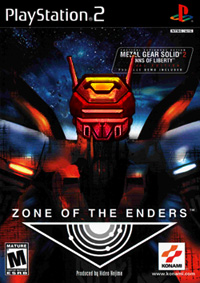 In December of 1999, SEGA released a nigh-on arcade perfect port on their ill-fated Dreamcast for Virtual On Oratorio Tangram. Like the Saturn port of its precursor, it also featured a bespoke controller to emulate the arcade version’s original setup: a pair of twinsticks. It was critically lauded by almost all Japanese (and many Western) publications and did quite well in terms of sales too.
In December of 1999, SEGA released a nigh-on arcade perfect port on their ill-fated Dreamcast for Virtual On Oratorio Tangram. Like the Saturn port of its precursor, it also featured a bespoke controller to emulate the arcade version’s original setup: a pair of twinsticks. It was critically lauded by almost all Japanese (and many Western) publications and did quite well in terms of sales too.
The thing with the Virtual On series though is that they’ve always been focused around human multiplayer. In that regard they are practically peerless. As to their singleplayer “experience”; it’s almost been an oversight.
Even Hajime Katoki’s mecha design was forcibly restrained for the various Virtuaroids, as the 1995 original had very stringent polygon counts which set the aesthetic. The first two Virtual On games in fact are almost exercises in functional minimalism.
Yet Virtual On, as a series, has had a remarkable amount of design-based progeny over the years but in the case of Oratorio Tangram such “offspring” would only be a few years away.
Cue Hideo Kojima…



Posted on : 07-09-2009 | By : Cacophanus | In : Reviews
Posted on : 06-09-2009 | By : Cacophanus | In : Reviews
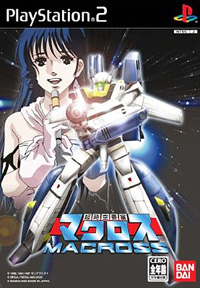 There are particular anime heirlooms that require a certain type of respect and admiration, especially when licensed merchandising invariably raises its head. Choujikyuu Yosai Macross is such an heirloom. Originally aired in 1982 as a 36 episode TV series, then as an adapted movie in 1984, Studio Nue’s epic-yet-human space opera is greatly revered.
There are particular anime heirlooms that require a certain type of respect and admiration, especially when licensed merchandising invariably raises its head. Choujikyuu Yosai Macross is such an heirloom. Originally aired in 1982 as a 36 episode TV series, then as an adapted movie in 1984, Studio Nue’s epic-yet-human space opera is greatly revered.
It also marked the creative debut of one Shouji Kawamori: a then meek mecha designer, he penned the timeless design of the VF-1 “Valkyrie”. Timeless in the way it looked like a contemporary F-14 fighter jet but also seamlessly transformed into a giant mecha to combat equally giant aliens out to destroy the human race. Unsurprisingly, there have been many Macross videogames over the 20-year period since Macross was created. Many have been utterly dire. A select few haven’t.
Normally, the mere mention of SEGA-AM2 indicates a project of austere quality, after all AM2 truly have an enviable gaming portfolio. Bandai realised this state of affairs after releasing the (pretty poor) Macross Digital Mission VF-X games developed by UNiT, not to mention the shocking Macross Plus Game Edition and Macross M3 created by Shoeisha, and they thankfully commissioned AM2 to make matters right.



Posted on : 06-09-2009 | By : Cacophanus | In : Reviews
Posted on : 06-09-2009 | By : Cacophanus | In : Reviews
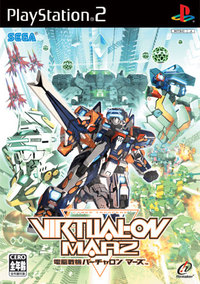 Virtual On is oft-misunderstood as a series. The majority of people focus on the presence of big robots, rather than the game mechanics, that the franchise offers. Moreover, the game’s control interface, through that of a pair of TwinSticks, has caused consternation amongst many a gamer due to their apparent lack of inclusivity: players new to the title struggle with the steep learning curve these devices create, not forgetting to mention that the majority of people remain utterly baffled as to the game’s actual content, and how to manoeuvre within the game world.
Virtual On is oft-misunderstood as a series. The majority of people focus on the presence of big robots, rather than the game mechanics, that the franchise offers. Moreover, the game’s control interface, through that of a pair of TwinSticks, has caused consternation amongst many a gamer due to their apparent lack of inclusivity: players new to the title struggle with the steep learning curve these devices create, not forgetting to mention that the majority of people remain utterly baffled as to the game’s actual content, and how to manoeuvre within the game world.
Arcade games require practice, patience and training on the part of the player. Virtual On has a brutal learning curve, but the thoroughness of thought and skill that is expected from the player only helps to enrich the overall experience. Thing is, this could be said for any arcade game, and is very much a tenet of design within this part of the games industry.



Posted on : 06-09-2009 | By : Cacophanus | In : Reviews
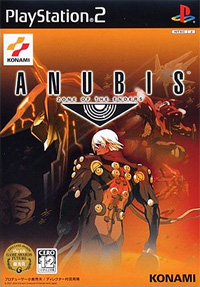 Set a few years after the first incarnation, the game starts with the player being re-introduced to the mechanical avatar of Egyptian death, Jehuty. Along with it’s new virile pilot, Dingo Egret. What follows is a truly impressive and epic narrative, after all the first game wasn’t the only part of the saga. Admittedly, the plucky little hero from the first game game, Leo Steinbuck, makes an appearance, but the overall narrative tone is far more mature and developed now. There has even been an animated movie and TV series too. Unfortunately, there is just too much focus on the narrative, to the point where it detracts from the overall game.
Set a few years after the first incarnation, the game starts with the player being re-introduced to the mechanical avatar of Egyptian death, Jehuty. Along with it’s new virile pilot, Dingo Egret. What follows is a truly impressive and epic narrative, after all the first game wasn’t the only part of the saga. Admittedly, the plucky little hero from the first game game, Leo Steinbuck, makes an appearance, but the overall narrative tone is far more mature and developed now. There has even been an animated movie and TV series too. Unfortunately, there is just too much focus on the narrative, to the point where it detracts from the overall game.
The actual game itself has been improved noticeably, Jehuty can do a lot more now. The old grab function, with its new implementation, adds a lot of spice to regular combat, but some of the boss fights fall foul of this new function to the point of gimmickry. As such, in many of the numerous boss fights the player has to grab an object and use it as a “guard” against an ensuing attack. So instead of gauging the combat mechanic in a gradual process, we have to endure lengthy boss encounters where we cannot directly attack our foe. Admittedly it is a useful and innovative function, but over used.



Posted on : 06-09-2009 | By : Cacophanus | In : Reviews
Posted on : 06-09-2009 | By : Cacophanus | In : Reviews
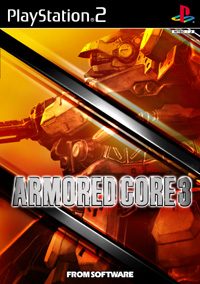 Forcing balance can be a tricky thing with game design, especially when it comes to sequels. If you have already set a precedent on acquiring ever more powerful weapons in a game franchise, to deny that in a sequel would (most probably) irritate the hell out of your customers. In this particular case, From Software got it right.
Forcing balance can be a tricky thing with game design, especially when it comes to sequels. If you have already set a precedent on acquiring ever more powerful weapons in a game franchise, to deny that in a sequel would (most probably) irritate the hell out of your customers. In this particular case, From Software got it right.
Set in a post-apocalyptic future, where mankind has retreated to the sanctuary of underground cities, humanity is still in the throws of petty corporate warfare. Disregarding the possibility of human extinction, the corporate schmucks decide to speed up the carnage by hiring mercenaries. This is where you come in. Your ride of choice is a fully customisable mechanical monstrosity, an avatar of destruction if you will. You goal is to take on missions and proceed to earn cash to buy more parts that can kill things quicker. In short, it is great cathartic fun.
The big changes in Armored Core 3 are several fold. The first big change is that the game is now four player. Matches can either be free for all or team based. When team based, the first side to destroy the opponent’s “Leader” wins. A system not all that different from Hitmaker’s (rather disappointing) Virtual On Force. In the missions part of the game this follows on somewhat. On some missions you are allowed to hire “consorts” to help you out, this can be extremely helpful on some missions.



Posted on : 05-09-2009 | By : Cacophanus | In : Reviews
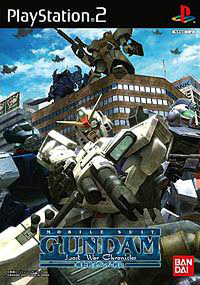 Franchises can be double-edged swords when it comes to gaming. The Bond franchise, for instance, has produced one superb game and a plethora of utterly shocking ones. The Gundam franchise is also very similar in this respect too. There have been vast numbers of Gundam games released over the years, of which most have been total gaming travesties. Thankfully “Lost War Chronicles” is a refreshingly solid gaming experience.
Franchises can be double-edged swords when it comes to gaming. The Bond franchise, for instance, has produced one superb game and a plethora of utterly shocking ones. The Gundam franchise is also very similar in this respect too. There have been vast numbers of Gundam games released over the years, of which most have been total gaming travesties. Thankfully “Lost War Chronicles” is a refreshingly solid gaming experience.
“Lost War Chronicles” is a pseudo side-story to the original Gundam’s “One Year War”. Using a very similar, but a nonetheless graphically improved and speedier game engine to that of “Journey to Jaburo”, many will feel that this is merely a soulless cash in rather than anything of worthy repute.
It is probably one of the most solid Gundam and, consequently, mecha games of recent years. Whilst not as inclusive as Capcom’s popular arcade incarnation, there is considerably more depth available to the player in Bandai’s recent outing.



Posted on : 05-09-2009 | By : Cacophanus | In : Reviews
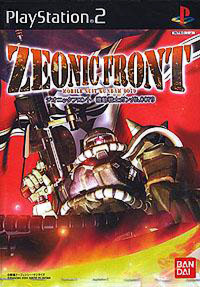 Gundam is a weird franchise when it comes to gaming. Weird in the way that the majority of official tie-in titles often fumble the ball, whereas the “gaiden” (or sidestory) titles are often superb.
Gundam is a weird franchise when it comes to gaming. Weird in the way that the majority of official tie-in titles often fumble the ball, whereas the “gaiden” (or sidestory) titles are often superb.
The Saturn was the first console to hold host to one of the more renowned Gundam gaiden games; the Blue Destiny trilogy. Not playing as the main characters from the anime, you had to survive as grunts on the frontline in seriously underpowered hardware. As a consequence, the overall gaming experience was more gritty and intense. It was also one of the first Gundam games to implement a first person cockpit view properly (the PSone Gundam game doesn’t count, because that was rubbish).
The same development team behind the Blue Destiny trilogy then went onto create Rise From The Ashes on the Dreamcast. Again, it was similarly gritty and involved you on the frontline with your mechanical balls against the wall. The interesting addition in the Dreamcast version was the ability to control wingmen and give them very specific orders (all this could be done on the fly too). Then things went dead. With the advent of the PS2, Bandai financed a bunch of underpar “canon” Gundam games, which completely lacked the edgy realism and tactical vivacity of their “gaiden” brethren. That was, of course, until Bandai announced Zeonic Front.



 In December of 1999, SEGA released a nigh-on arcade perfect port on their ill-fated Dreamcast for Virtual On Oratorio Tangram. Like the Saturn port of its precursor, it also featured a bespoke controller to emulate the arcade version’s original setup: a pair of twinsticks. It was critically lauded by almost all Japanese (and many Western) publications and did quite well in terms of sales too.
In December of 1999, SEGA released a nigh-on arcade perfect port on their ill-fated Dreamcast for Virtual On Oratorio Tangram. Like the Saturn port of its precursor, it also featured a bespoke controller to emulate the arcade version’s original setup: a pair of twinsticks. It was critically lauded by almost all Japanese (and many Western) publications and did quite well in terms of sales too.
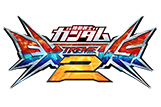
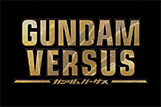
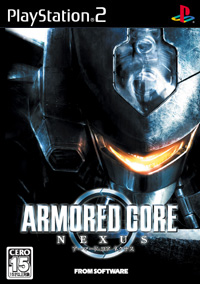 How can anyone explain the satisfaction of creating a beautifully balanced mechanical avatar, taking it into the thick of combat and yet returning from the battlefield unscathed? Bathing in your freshly acquired and truly magnificent skill, you watch as charred wreckage surrounds your astounding creation. Gaming empowerment doesn’t really come any better than this.
How can anyone explain the satisfaction of creating a beautifully balanced mechanical avatar, taking it into the thick of combat and yet returning from the battlefield unscathed? Bathing in your freshly acquired and truly magnificent skill, you watch as charred wreckage surrounds your astounding creation. Gaming empowerment doesn’t really come any better than this. There are particular anime heirlooms that require a certain type of respect and admiration, especially when licensed merchandising invariably raises its head. Choujikyuu Yosai Macross is such an heirloom. Originally aired in 1982 as a 36 episode TV series, then as an adapted movie in 1984, Studio Nue’s epic-yet-human space opera is greatly revered.
There are particular anime heirlooms that require a certain type of respect and admiration, especially when licensed merchandising invariably raises its head. Choujikyuu Yosai Macross is such an heirloom. Originally aired in 1982 as a 36 episode TV series, then as an adapted movie in 1984, Studio Nue’s epic-yet-human space opera is greatly revered.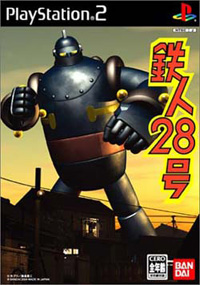 In 1956, a certain Mitsuteru Yokoyama penned a manga by the name of “Tetsujin 28-go”. This manga portrayed the life of a young boy called Shotaro Haneda, remote controlling a huge military robot called Tetsujin 28-go to thwart the forces of evil and do good in the world. It wasn’t very long before this manga made the transition to anime, and then jumped the Pacific Ocean to mesmerise the US populace (under the new name of “Gigantor”). It’s important to clarify one thing from the start: Mitsuteru Yokoyama’s “Tetsujin 28-go” was single-handedly responsible for the creation of Japanese mecha pop-culture. His work has inspired generations of people. Some of these people happen to work at a Japanese developer called Sandlot.
In 1956, a certain Mitsuteru Yokoyama penned a manga by the name of “Tetsujin 28-go”. This manga portrayed the life of a young boy called Shotaro Haneda, remote controlling a huge military robot called Tetsujin 28-go to thwart the forces of evil and do good in the world. It wasn’t very long before this manga made the transition to anime, and then jumped the Pacific Ocean to mesmerise the US populace (under the new name of “Gigantor”). It’s important to clarify one thing from the start: Mitsuteru Yokoyama’s “Tetsujin 28-go” was single-handedly responsible for the creation of Japanese mecha pop-culture. His work has inspired generations of people. Some of these people happen to work at a Japanese developer called Sandlot. Virtual On is oft-misunderstood as a series. The majority of people focus on the presence of big robots, rather than the game mechanics, that the franchise offers. Moreover, the game’s control interface, through that of a pair of TwinSticks, has caused consternation amongst many a gamer due to their apparent lack of inclusivity: players new to the title struggle with the steep learning curve these devices create, not forgetting to mention that the majority of people remain utterly baffled as to the game’s actual content, and how to manoeuvre within the game world.
Virtual On is oft-misunderstood as a series. The majority of people focus on the presence of big robots, rather than the game mechanics, that the franchise offers. Moreover, the game’s control interface, through that of a pair of TwinSticks, has caused consternation amongst many a gamer due to their apparent lack of inclusivity: players new to the title struggle with the steep learning curve these devices create, not forgetting to mention that the majority of people remain utterly baffled as to the game’s actual content, and how to manoeuvre within the game world. Set a few years after the first incarnation, the game starts with the player being re-introduced to the mechanical avatar of Egyptian death, Jehuty. Along with it’s new virile pilot, Dingo Egret. What follows is a truly impressive and epic narrative, after all the first game wasn’t the only part of the saga. Admittedly, the plucky little hero from the first game game, Leo Steinbuck, makes an appearance, but the overall narrative tone is far more mature and developed now. There has even been an animated movie and TV series too. Unfortunately, there is just too much focus on the narrative, to the point where it detracts from the overall game.
Set a few years after the first incarnation, the game starts with the player being re-introduced to the mechanical avatar of Egyptian death, Jehuty. Along with it’s new virile pilot, Dingo Egret. What follows is a truly impressive and epic narrative, after all the first game wasn’t the only part of the saga. Admittedly, the plucky little hero from the first game game, Leo Steinbuck, makes an appearance, but the overall narrative tone is far more mature and developed now. There has even been an animated movie and TV series too. Unfortunately, there is just too much focus on the narrative, to the point where it detracts from the overall game.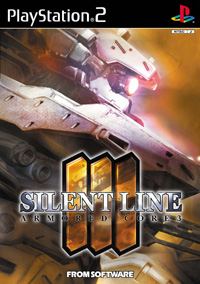 Armored Core 3: Silent Line is the seventh game in the franchise. For the more cynical of you copious eye rolling is not to be unexpected. It is, however, utterly without valediction. Silent Line is an utterly superb game.
Armored Core 3: Silent Line is the seventh game in the franchise. For the more cynical of you copious eye rolling is not to be unexpected. It is, however, utterly without valediction. Silent Line is an utterly superb game. Forcing balance can be a tricky thing with game design, especially when it comes to sequels. If you have already set a precedent on acquiring ever more powerful weapons in a game franchise, to deny that in a sequel would (most probably) irritate the hell out of your customers. In this particular case, From Software got it right.
Forcing balance can be a tricky thing with game design, especially when it comes to sequels. If you have already set a precedent on acquiring ever more powerful weapons in a game franchise, to deny that in a sequel would (most probably) irritate the hell out of your customers. In this particular case, From Software got it right. Franchises can be double-edged swords when it comes to gaming. The Bond franchise, for instance, has produced one superb game and a plethora of utterly shocking ones. The Gundam franchise is also very similar in this respect too. There have been vast numbers of Gundam games released over the years, of which most have been total gaming travesties. Thankfully “Lost War Chronicles” is a refreshingly solid gaming experience.
Franchises can be double-edged swords when it comes to gaming. The Bond franchise, for instance, has produced one superb game and a plethora of utterly shocking ones. The Gundam franchise is also very similar in this respect too. There have been vast numbers of Gundam games released over the years, of which most have been total gaming travesties. Thankfully “Lost War Chronicles” is a refreshingly solid gaming experience. Gundam is a weird franchise when it comes to gaming. Weird in the way that the majority of official tie-in titles often fumble the ball, whereas the “gaiden” (or sidestory) titles are often superb.
Gundam is a weird franchise when it comes to gaming. Weird in the way that the majority of official tie-in titles often fumble the ball, whereas the “gaiden” (or sidestory) titles are often superb.






